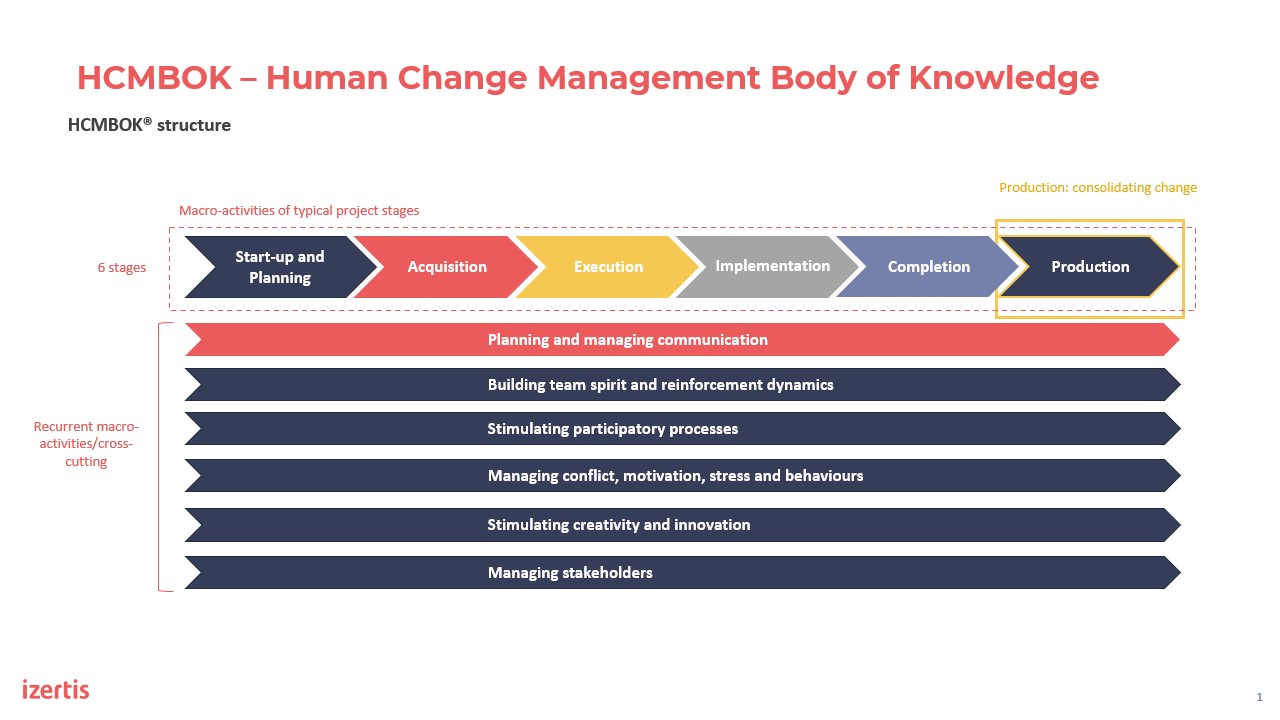
What is HCMBOK?
The Human Change Management Body of Knowledge (HCMBOK®) is a deep and complex area that requires our full attention. Despite the simplicity of its acronym, it delves into areas that require our utmost attention when discussing Human Change Management.
"Everything flows, nothing stays the same. Change is the only constant." - Heraclitus of Ephesus. Philosopher (540-480 BC).
Change is inevitable and today, the speed at which it occurs has increased significantly. All we have to do is look around us, the massive technological advancements, the generational gaps, crises, organizational restructuring, digital transformation, and a long list of other things, constantly remind us of the barrage of changes that we have to face in our daily lives.
We can also say that many of these changes are strictly necessary for our own evolution and improvement. Throughout history, we find countless examples of how important and vital it was for humanity to face change even in the midst of great concerns and uncertainties. Let's not go too far back, let's look back just a few years.
Organizations are constantly changing. The vehicle for these changes are projects, and the engine of these projects, without a doubt, are people.
Organizations that use Change Management as a regular discipline in strategic projects have a 69% success rate, versus a 41% of those that do not address the human factor in their projects.
"There are no projects without people, nor changes that should not be structured as projects"
The HCMBOK® is the model proposed by the HUCMI (Human Change Management Institute), for managing and leading change. Its focus is primarily based on considering the human factor as part of the strategy of any kind of projects.
Human beings are naturally resistant to change. According to the HCMBOK, "Managing change is humanizing it. It is thinking about the project from the perspective of the people who are part of it, so as to avoid the natural resistances from impacting the planned objectives."
According to the HCMBOK®, Change Management is "a discipline for planning, applying, measuring and monitoring the management of the human factor in change projects, thus increasing the chances of the expected results being achieved or even exceeded".
The HCMBOK® is a set of practices, methodologies, and tools that has been developed based on different disciplines such as Project Management, Anthropology, Psychology, Thanatology, People Management and Leadership, and can be interconnected with any project management methodology. HCMBOK® 3rd Edition - Human Change Management Institute.
It is a reference framework for Change Management, in which, a sequence of processes and activities is proposed to help us manage change and focus on what is really important, people.
"There are no changes that should not be organized as projects, just as there are no projects that do not generate changes." HCMBOK® 3rd Edition - Human Change Management Institute
Structure of HCMBOK®:
A macro-view of the methodology includes 6 stages, 48 macro-activities, and 203 activities.
The 6 typical stages of a project are:
- Start and planning: analysing all the components of the human atmosphere that will be affected by the change process, i.e. the diagnosis.
- Acquisition: evaluating suppliers.
- Execution: launching the change process.
- Implementation: expanding the change throughout the organization.
- Completion: closing the project.
- Production: consolidating the change.
Recurrent/transversal macro-activities:
- Planning and managing communications.
- Building team spirit and performing reinforcement dynamics.
- Encouraging participatory processes.
- Managing conflicts, motivation, stress, and behaviours.
- Encouraging creativity and innovation.
- Managing stakeholders.

The HCMBOK® identifies the most important phases as those related to the diagnosis (Initiation and Planning, and Acquisition phases) and the one related to the consolidation of change (Production phase).
The set of recurrent/transversal macro-activities will be part of the project repeatedly, from the Initiation stage to the Production stage. They are extremely important in the change management process and at the same time are the most complex and difficult to manage.
The HCMBOK® identifies the most important phases as those related to the diagnosis and the one related to the consolidation of change
The proper application of the HCMBOK requires flexibility, both in the selection of the activities to be developed and in the sequence of their execution. Each project is a "world". Not all projects will require the use of all macro-activities and activities. The approach to change management must be defined by selecting those that best fit the project to be carried out and that match the organizational culture.
At Izertis, we consider that each transformation or change is unique, and when it happens it can change both people, processes and the organization's culture.
Our Change Management model proposes a structured approach to manage the change aspects related to people and the organization to achieve desired results. Its goal is to help the organization, employees, and stakeholders to accept the change.
We consider it necessary to have a strategy that allows planning a complete action plan that considers different scenarios, as well as strategies to overcome rejection, as any change will cause some resistance by the people who have to carry it out.
Our consulting services include Change Management from day one as a transversal activity that we consider vital for the successful implementation of our catalogue of services. The result is that our work plan truly guarantees the adoption of new processes and management models.
Managing change, on a personal and professional level, does not mean "surviving" but rather, "living" the change with passion, optimism, and courage.

